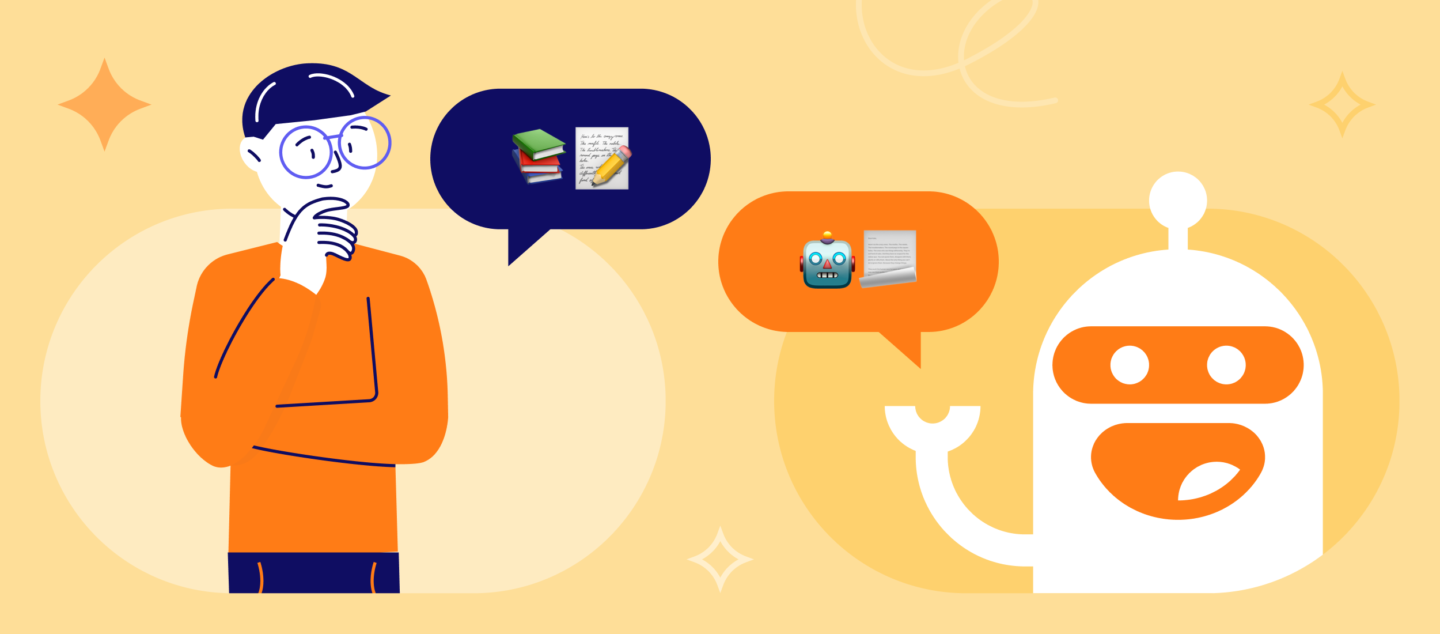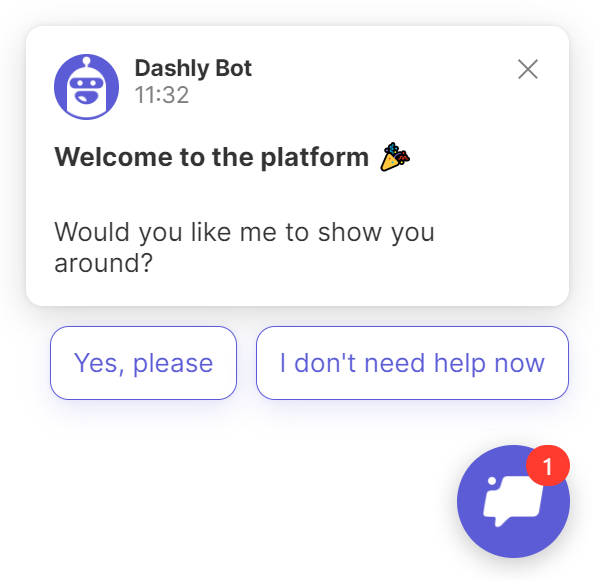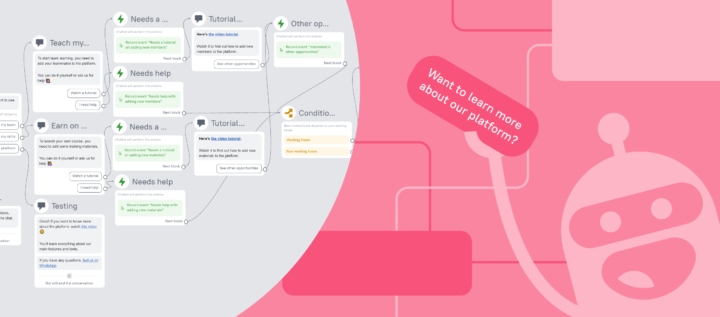14 examples of chatbots in education: revolutionizing the learning experience

In recent years, chatbots have emerged as powerful tools in various industries, including education. By leveraging artificial intelligence development solutions, they are transforming the way students learn and interact with educational content.educational content.
In this article, we’ll explore some of the best use cases and real-life examples of chatbots in education.
Chatbot use cases in education
Student onboarding and orientation
For new students, navigating an online school environment can be challenging. Chatbots can help simplify the onboarding process by:
- Providing virtual tours of the online platform and its features;
- Offering step-by-step guidance on course registration and enrollment;
- Answering frequently asked questions about school policies and procedures.

Personalized learning and academic support
Chatbots can offer personalized learning experiences for students in online schools, adapting to their individual needs, and offering support in various subject areas. Here are some examples:
- Thinkster Math: Combines AI-driven tutoring with human support for a personalized math learning experience.
- Carnegie Learning’s Mika: Offers real-time tutoring in mathematics and tracks student progress.
- ALEKS: Provides personalized learning in math, chemistry, and economics.
Homework assistance
One of the most popular use cases for chatbots in education is helping with homework. These chatbots help students understand complex topics, provide step-by-step solutions, and offer tips for completing assignments.
God, where did they hide this technology back in my school days? 😩
Let’s take a look at a few real-life examples:
- Socratic by Google: Assists students with math, science, literature, and more.
- Mathway: Specializes in solving math problems, from basic arithmetic to calculus.
- Duolingo Bots: Offers language learning assistance and conversational practice.
Exam Preparation and Study Guides
Use chatbots to support students. They’ll help prepare for exams by providing study guides, practice questions, and instant feedback. Some notable examples are:
- QuizBot: Offers customizable quizzes in various subjects to help students prepare for exams.
- StudyBuddy: Provides students with personalized study plans based on their learning styles.
- Test Preparation Bots (e.g., GRE, SAT, ACT): Offer practice questions, tips, and strategies for standardized tests.
Student engagement and community building
Building a sense of community and maintaining student engagement can be challenging in online schools. Chatbots can help by:
- Facilitating virtual study groups and connecting students with similar interests.
- Offering interactive learning activities and games to keep students engaged.
- Providing support for mental health and well-being through resources and referrals.
Career guidance and job placement
Chatbots can also play a role in guiding students toward potential career paths and helping them secure job opportunities after completing their online education. Automated assistant will help you with:
- Assessing students’ skills, interests, and goals to recommend suitable career paths.
- Sharing information about relevant internships, job openings, and networking events.
- Offering guidance on resume writing, interview preparation, and job search strategies.
Administrative support
Chatbot can become your full-fledged learning assistant. And not only in the classroom. They will help you streamline administrative tasks for online schools, resulting in more efficient operations. Some of the key use cases include:
- Automating course registration, scheduling, and enrollment processes.
- Facilitating communication between students, faculty, and staff.
- Assisting with financial aid applications and payment processing.
Chatbots will level up the experience for both your current and prospective students.
24/7 learning support
It’s 2 AM. A student’s deep in study mode, stuck on a tough concept. Normally? They’d have to wait hours — or until the next day — to ask a teacher or classmate. Frustrating. And let’s be honest, a momentum killer.
Enter educational chatbots.
These little helpers are online 24/7, ready to explain tricky topics anytime. No waiting. No stress. Just answers, right when they’re needed.
Students get to learn at their own pace whether it’s a late-night cram session or a quick question before class. And for schools and universities? That’s a win too. Always on support means happier students, fewer unanswered questions, and maybe even better grades.
Multilingual accessibility
Not every student speaks perfect English. And that’s okay.
Multilingual chatbots step in to level the playing field. They chat in the language the student’s most comfortable with. No awkward translations, no guessing games.
In classrooms filled with international students, that’s a game changer. Whether someone’s trying to wrap their head around a tricky topic or just needs help figuring out how to apply for financial aid, the chatbot’s got it covered. In their language.
It’s not just about learning. It’s about making the whole education experience smoother from course info to paperwork. Everyone gets the same shot, no matter where they’re from or what language they speak.
Data-driven insights
Want to know what’s working in your courses and what’s not? Ask the chatbot.
Education chatbots don’t just answer questions. They record data. Every interaction with a student is a goldmine of feedback. What topics they struggle with, how they react to different formats, when they drop off it’s all there.
And it’s not just about numbers. You get real, human insights too. What’s confusing. What’s engaging. What makes students say, “ugh.”
Schools can use all that info to tweak lessons, update materials, or even rethink how support works. The result? Smarter teaching. Happier students. Better outcomes.
Cost efficiency
Let’s be real, running a school isn’t cheap.
But chatbots? They help cut costs without cutting corners. By automating the boring stuff like answering the same student questions over and over schools can free up staff time and shrink admin overhead.
That means more budget for what actually matters: better classrooms, smarter tools, and stronger support for students.
And it doesn’t stop at admin work. Chatbots can pitch in where extra hands are usually needed like tutoring or helping with homework. No need to expand after-school programs or hire more staff. The chatbot’s already on it.
Feedback collection and analysis
Feedback makes everything better. And with chatbots, getting it is way easier.
No need for long surveys or waiting till the end of the semester. Chatbots collect feedback on the go right in the middle of a chat, quiz, or lesson. From students and teachers.
That means schools get a steady stream of insights on what’s working and what’s not. Teaching methods. Materials. Support tools. All of it.
With that kind of real-time data, it’s easy to tweak things fast and keep the quality of education moving in the right direction.
Improving student retention
When students feel supported, they stick around. Simple as that.
Chatbots help make it happen. They’re always there to answer questions, offer tips, and guide students through tricky topics day or night.
But it goes deeper than just help on demand. Chatbots can spot when a student’s struggling. Missed deadlines, fewer interactions, weird patterns can be your signs. That gives schools a chance to step in with extra support before things go off track.
It’s a win for everyone. Students get what they need to succeed. And schools see better results across the board.
Fostering inclusivity
Not every student learns the same way. And that’s exactly why chatbots matter.
They adapt. Whether a student needs extra time, different formats, or simpler explanations, chatbots adjust how they communicate to meet those needs. That means students with disabilities or learning challenges don’t get left behind.
But it’s not just about accessibility. It’s about inclusivity. Different cultures, backgrounds, languages — chatbots help everyone feel seen and supported.
And the best part? You don’t need a tech team to get started.
Real-life examples of chatbots helping in the learning process
- Duolingo’s Chatbot for Language Learning
Duolingo, a popular language learning app, has integrated chatbots to help users practice conversational skills in various languages. Through interactive dialogs and simulated conversations, learners can improve their speaking, listening, and comprehension skills in a low-pressure environment.
- Georgia State University’s Pounce Chatbot
Georgia State University developed Pounce, an AI-powered chatbot designed to assist students during the enrollment process.
Pounce answers questions about admissions, financial aid, and registration, reducing the number of students who drop out due to confusion or lack of information.
- QuizBot for Learning and Revision
QuizBot is an educational chatbot that helps students learn and review course material through engaging quizzes.
By sending questions on various subjects via messaging apps, QuizBot helps students retain information more effectively and prepare for exams in a fun and interactive way.
- Carnegie Mellon University’s AI Tutor
Carnegie Mellon University has developed an AI tutor called ALEKS (Assessment and Learning in Knowledge Spaces) that provides personalized learning experiences for students.
ALEKS assesses students’ knowledge and skills in specific subjects and then suggests learning paths tailored to their individual needs.
This adaptive learning chatbot helps students master the material more efficiently.
- SchoolMessenger Chatbot for Parent-Teacher Communication
SchoolMessenger, a communication platform for K-12 schools, has introduced a chatbot feature to facilitate parent-teacher communication.
The chatbot lets parents ask questions about their child’s progress, school events, and important deadlines, improving communication and engagement between parents and schools.
These real-life examples showcase how chatbots are integrated into education and online schools, offering enhanced learning experiences, administrative support, and improved communication.
The bottom line
The use of chatbots in education is rapidly expanding.
They ensure a more interactive and effective student learning method and alleviate teachers’ workload. From homework assistance and personalized tutoring to administrative tasks and language learning, chatbots can potentially revolutionize the educational landscape.
As technology continues to evolve, we can expect even more innovative and impactful education chatbot examples in the future.
Keep up with the developing industry and launch the first chatbot on your school website now! We in Dashly are glad to help you with it.





![36 ready-made scenarios of triggered campaigns for online schools [education]](https://www.dashly.io/blog/wp-content/uploads/2022/12/путеводитель-по-маркетингу-720x317.jpg)